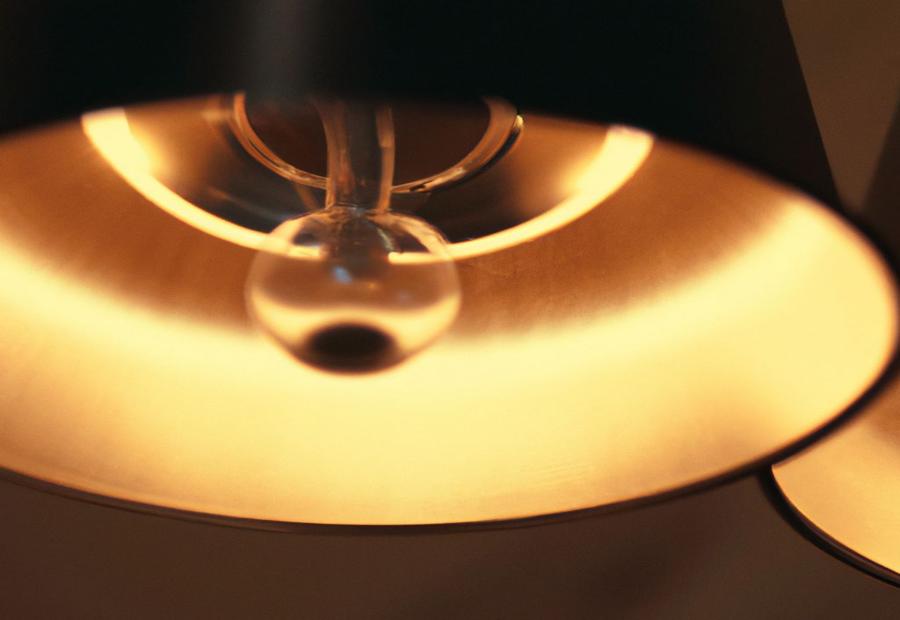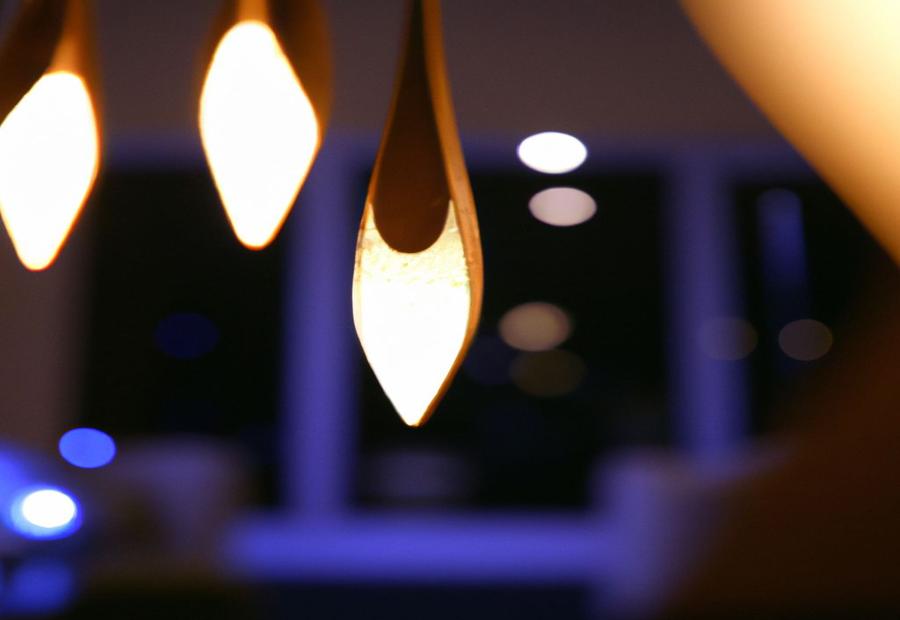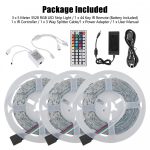Last Updated on 10 months by Francis
.jpg)
Introduction to LED Light Fittings
LED light fittings have become increasingly popular in recent years due to their energy efficiency, longevity, and versatility. These lighting fixtures are widely used in homes, offices, and commercial spaces. In this article, we will address an important question related to LED light fittings – Do LED light fittings need to be earthed?
Understanding the Importance of Earthing
Earthing, also known as grounding, is a safety measure in electrical systems that involves connecting electrical devices to the earth. It serves as a pathway for electrical faults, allowing excessive current to flow safely into the ground, rather than through a person or other objects. Earthing is crucial for protecting against electric shock and preventing electrical fires.
Factors to Consider for LED Light Fittings
When it comes to LED light fittings, several factors need to be considered regarding earthing. Electrical safety should always be a priority, and compliance with building regulations and codes is essential.
Electrical Safety
Ensuring electrical safety is crucial for any lighting installation. While LED lights generally have low voltage and pose a lower risk of electric shock compared to traditional lighting, it is still important to evaluate the necessity of earthing based on the specific circumstances and electrical requirements.
Building Regulations and Codes
Building regulations and codes can vary from one jurisdiction to another. It is important to consult local regulations and guidelines to determine the specific requirements for earthing LED light fittings in your location. Compliance with these regulations ensures the safety and functionality of the lighting installation.
When is Earthing Required for LED Light Fittings?
The requirement for earthing LED light fittings depends on various factors such as the electrical setup, installation location, and local regulations. In certain cases, earthing may be mandatory to ensure the safety and proper functioning of the LED light fittings. It is crucial to assess these factors and consult with a qualified electrician if you are unsure about the need for earthing in your specific situation.
Benefits of Earthing LED Light Fittings
Earthing LED light fittings offer several key benefits for safety and functionality. Firstly, it provides protection against electrical faults, reducing the risk of electric shock and other electrical hazards. Proper earthing enhances overall safety by ensuring that the electrical system functions efficiently and reliably.
How to Determine If Your LED Light Fittings Need Earthing?
Determining whether your LED light fittings require earthing can be challenging, especially without proper electrical knowledge. It is recommended to consult with a qualified electrician who can assess your specific lighting installation and advise on the necessity of earthing based on local regulations and safety considerations.
How to Properly Earth LED Light Fittings?
Proper earthing should be carried out by a qualified electrician who has the knowledge and expertise to ensure compliance with electrical standards and regulations. They will assess the electrical setup, install the necessary grounding components, and ensure the entire system is properly earthed, providing a safe and reliable lighting installation.
Considering the importance of electrical safety and compliance with regulations, the issue of earthing LED light fittings is a crucial aspect to address. By understanding the significance of earthing, evaluating the specific requirements, and consulting with professionals, you can ensure a safe and efficient LED lighting system in your space.
Contents
Key takeaway:
- LED light fittings may need to be earthed: Understanding the importance of earthing is crucial to determine if your LED light fittings require earthing or not.
- Electrical safety is a key factor: Proper earthing of LED light fittings ensures protection against electrical faults, reducing the risk of shocks and other hazards.
- Complying with building regulations and codes: It is important to consider local regulations and codes to determine if earthing is required for LED light fittings, ensuring compliance and safety.
Do LED Light Fittings Need to Be Earthed?
When it comes to LED light fittings, a burning question arises: do they really need to be earthed? Let’s dive into this vital topic and unravel the significance of earthing. Get ready to discover why understanding the importance of earthing is essential for ensuring the safety and reliability of your LED light fittings. Buckle up, as we explore the facts, figures, and events that shed light on this electrifying subject!
Understanding the Importance of Earthing
Understanding the importance of earthing is crucial when it comes to LED light fittings. Earthing provides a path for electrical faults to safely discharge into the ground, preventing the possibility of electric shock and reducing the risk of fire. It is an essential safety measure that ensures the protection of individuals and property.
By properly earthing LED light fittings, you can effectively protect against electrical faults. This means that if there is a malfunction or surge of electricity, the excessive current will flow through the earthing system rather than through someone touching the fitting or causing a fire hazard.
Electrical safety regulations and codes mandate the requirement for earthing in certain circumstances. It is important to determine whether your LED light fittings need earthing by consulting with a qualified electrician or referring to the manufacturer’s guidelines.
To properly earth LED light fittings, it is necessary to connect the earth wire of the fitting to the earth terminal or earth leak protection device. This ensures that any electrical faults are safely directed away from the fitting and into the ground.
Fact: According to statistics, inadequate earthing is one of the leading causes of electrical accidents, highlighting the importance of understanding and implementing proper earthing measures for LED light fittings.
Factors to Consider for LED Light Fittings
When it comes to LED light fittings, there are crucial factors to consider to ensure optimal performance and safety. In this section, we’ll dive into the key aspects you need to keep in mind. From electrical safety to compliance with building regulations and codes, we’ll explore the critical points that can guide you in making informed decisions. Stay tuned to discover the factors that play a vital role in the world of LED light fittings.
Electrical Safety
Electrical safety is of utmost importance when it comes to LED light fittings. It is crucial to design and install these fittings with electrical safety in mind to prevent any potential hazards. It is essential to ensure that the fittings comply with relevant electrical safety standards and regulations.
To ensure electrical safety, it is paramount to have a qualified electrician install the fittings. They should have a good understanding of the specific requirements for LED light fittings. It is important for them to follow proper installation procedures and ensure that all electrical connections are secure and insulated. Regular maintenance and inspections are also necessary to identify and address any potential electrical issues.
The prioritization of electrical safety is crucial as it ensures the protection of individuals and property from electrical shocks, fires, and other hazards that can arise from faulty or improperly installed LED light fittings. By placing importance on electrical safety, accidents can be prevented, and a safe and secure environment can be maintained.
In a similar scenario, a family chose to install LED light fittings without considering electrical safety measures. Unfortunately, they experienced an electrical fire due to faulty wiring. This incident resulted in significant property damage and could have been avoided if they had sought professional help for the installation. This story serves as a reminder of the importance of electrical safety and the potential consequences of neglecting it.
Building Regulations and Codes
When it comes to LED light fittings, it is important to consider building regulations and codes to ensure compliance and safety. Here is a list of factors to consider:
- Electrical safety: Building regulations and codes specify the requirements for electrical safety when it comes to LED light fittings. These regulations ensure that the fittings are properly installed and do not pose a risk of electrical accidents.
- Fire safety: Building regulations and codes also address fire safety concerns with LED light fittings. This includes regulations on the materials used, insulation, and fire rating of the fittings to prevent the spread of fire.
- Energy efficiency: Building regulations and codes often require LED light fittings to meet certain energy efficiency standards. These standards ensure that the fittings consume less energy and contribute to overall energy conservation in buildings.
- Accessibility: Building regulations and codes may also specify requirements for the accessibility of LED light fittings. This includes considerations for individuals with disabilities, such as the placement and operation of switches and controls.
- Installation guidelines: Building regulations and codes provide guidelines on the proper installation of LED light fittings. These guidelines ensure that the fittings are installed correctly, taking into account factors such as load capacity, wiring, and spacing requirements.
By considering building regulations and codes, you can ensure that your LED light fittings are installed and used safely, meeting the necessary requirements for your specific building.
When is Earthing Required for LED Light Fittings?

Photo Credits: Infraredforhealth.Com by Bobby Green
When is Earthing Required for LED Light Fittings? Earthing is required for LED light fittings in certain situations to ensure safety and prevent electrical hazards. In situations where there is a metallic component or an exposed conductive part in the LED light fittings, earthing is necessary. This helps in grounding any potential electrical faults, providing a safe pathway for the electrical current to flow in case of a fault or short circuit.
Earthing is also required for LED light fittings in areas where there is a high risk of electrical shock or if the fittings are installed in damp or wet environments. In these conditions, earthing helps to dissipate any excess electrical charge and reduces the risk of electric shock.
It is important to note that the specific regulations for earthing requirements may vary depending on the location and electrical codes in place. Consulting with a qualified electrician or following the manufacturer’s instructions is recommended to determine the specific requirements for earthing LED light fittings in your situation.
Fact: According to the National Electrical Code (NEC), grounding and earthing systems are essential for electrical safety, providing protection against electrical shock and preventing electrical damage.
Benefits of Earthing LED Light Fittings

Photo Credits: Infraredforhealth.Com by Bradley Rivera
Earthing LED light fittings provides crucial benefits, safeguarding against potential electrical faults.
By grounding these fittings, we ensure a safer and more reliable electrical system.
Unforeseen surges or faults can be neutralized, protecting both the LED lights and the surrounding environment.
With this vital safety measure in place, the risk of electrical accidents or damage is significantly reduced.
Let’s delve into the various advantages of earthing LED light fittings and understand why this practice is essential for a secure and efficient lighting system.
Protection against Electrical Faults
Protection against electrical faults is a crucial aspect when considering LED light fittings. LED lights should be properly earthed to ensure safety. When LED light fittings are not properly earthed, there is a risk of electrical faults occurring, which can lead to electric shock or fire hazards.
Proper earthing provides a path for excess electrical current to flow safely into the ground, preventing the build-up of electrical charge. This helps protect against electrical faults, such as short circuits or power surges, which can damage the LED light fittings and pose a danger to individuals nearby.
To ensure protection against electrical faults, it is important to follow electrical safety regulations and codes. These guidelines provide standards for the correct installation and earthing of LED light fittings. Failure to comply with these regulations can increase the risk of electrical faults and compromise the safety of the lighting system.
Therefore, it is imperative to determine if your LED light fittings require earthing and, if so, to properly earth them. Consulting an electrical professional or referring to the manufacturer’s guidelines can assist in determining the specific earthing requirements for your LED light fittings. By prioritizing protection against electrical faults through proper earthing, you can ensure the safe and reliable operation of your LED lighting system.
How to Determine If Your LED Light Fittings Need Earthing?
How to Determine If Your LED Light Fittings Need Earthing?
-
Check the manufacturer’s instructions: The first step is to carefully read the instructions provided by the manufacturer of your LED light fittings. They should specify if earthing is required.
-
Examine the fittings for a ground terminal: Look for a metal tab or screw point on the LED light fittings. This is usually located on the fixture or the mounting bracket. If present, it indicates that earthing is necessary.
-
Consult a qualified electrician: If you are unsure or cannot determine if earthing is required based on the instructions or the fittings themselves, it is best to consult a qualified electrician. They have the expertise to assess and determine the earthing requirements for your LED light fittings.
In the early days of electrical lighting, many buildings did not have proper earthing systems in place. This posed a significant safety risk as the absence of earthing could lead to electric shocks and potential fires. Over time, advancements were made in electrical safety standards, and earthing became a crucial aspect of electrical installations. Today, determining whether LED light fittings need earthing is essential for ensuring the safety of both individuals and the electrical system as a whole.
How to Properly Earth LED Light Fittings?

Photo Credits: Infraredforhealth.Com by Benjamin Walker
To properly earth LED light fittings, follow these steps:
-
Ensure the power is turned off before beginning any work.
-
Locate the earth wire in the light fitting. It is usually green or green-yellow in color.
-
Connect the earth wire to the earth terminal in the light fitting. Use a screwdriver to tighten the connection securely.
-
If the light fitting does not have an earth terminal, attach the earth wire to a nearby metal surface, such as a metal conduit or a metal junction box.
-
Test the connection by using a multimeter to check for continuity between the earth wire and the metal surface. A reading of zero indicates a successful connection.
-
Finally, turn on the power and ensure the LED light fitting is functioning properly.
Pro-tip: If you are unsure about the electrical work involved in properly earthing LED light fittings, it is recommended to hire a qualified electrician to ensure safety and compliance.
Some Facts About Do LED Light Fittings Need to be Earthed:
- ✅ LED lights do not necessarily need to be grounded, but it is recommended for safety reasons. (Source: Infrared for Health)
- ✅ Safety switches will not work unless the entire building is grounded. (Source: Infrared for Health)
- ✅ LED lights should be grounded to avoid electric shocks, especially when used outdoors. (Source: Infrared for Health)
- ✅ Underwater power supplies can cause power surges, so using a grounded outlet is necessary. (Source: Infrared for Health)
- ✅ LED lights do not require grounding, but it is still recommended for safety reasons. (Source: Infrared for Health)
Frequently Asked Questions
Do LED light fittings need to be earthed?
No, LED light fittings do not necessarily need to be earthed. If the fitting is made from a non-conductive material such as glass, plastic, ceramic, or bakelite, it is not necessary to earth the unit.
What should I do if my LED light fitting has a conductive or metal outer surface?
If your LED light fitting has a conductive or metal exterior surface, it must always be earthed to prevent the risk of electrocution or serious injury. It is recommended to have a qualified electrician handle the fitting or installation in such cases.
Can I trim back the earth wire if my LED light fitting does not have an earth connection?
If you are using a three-core cable with an earth wire and your LED light fitting does not have an earth connection, you can trim back the earth wire and secure it using electrical insulation tape.
Is grounding necessary for LED lights powered by a DC adapter?
Using a cheater plug or ungrounded connection does not affect the performance of LED lights powered by a DC adapter. However, it is recommended to ground all power supplies for added safety when working with LED lights and power supplies. Some LED drivers and power supplies may require grounding for safety purposes.
Do LED lights need to be grounded when used outdoors or with underwater power supplies?
Yes, LED lights should be grounded when used outdoors or with underwater power supplies. Grounding helps protect against electric shocks and ensures the safety of the installation. It is important to handle waterproof power supplies carefully and use grounded outlets to avoid power surges.
Do all LED light fixtures require grounding?
No, not all LED light fixtures require grounding. LED light fixtures made of plastic or other non-conductive materials do not require grounding. However, LED light fixtures made of metal and conducting electricity must be earthed for safety purposes. It is recommended to consult a certified electrician for proper installation and grounding of LED light fixtures.


.jpg)
.jpg)




